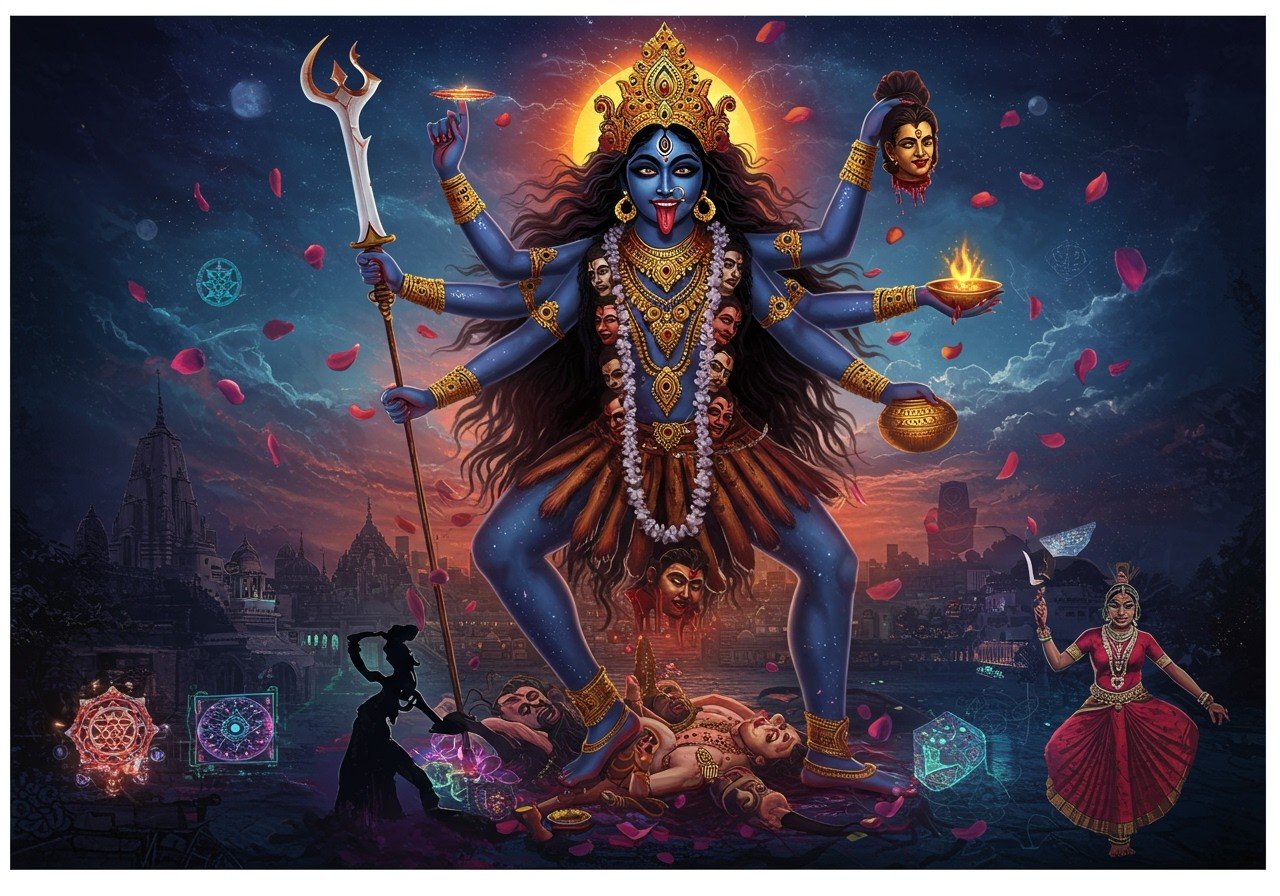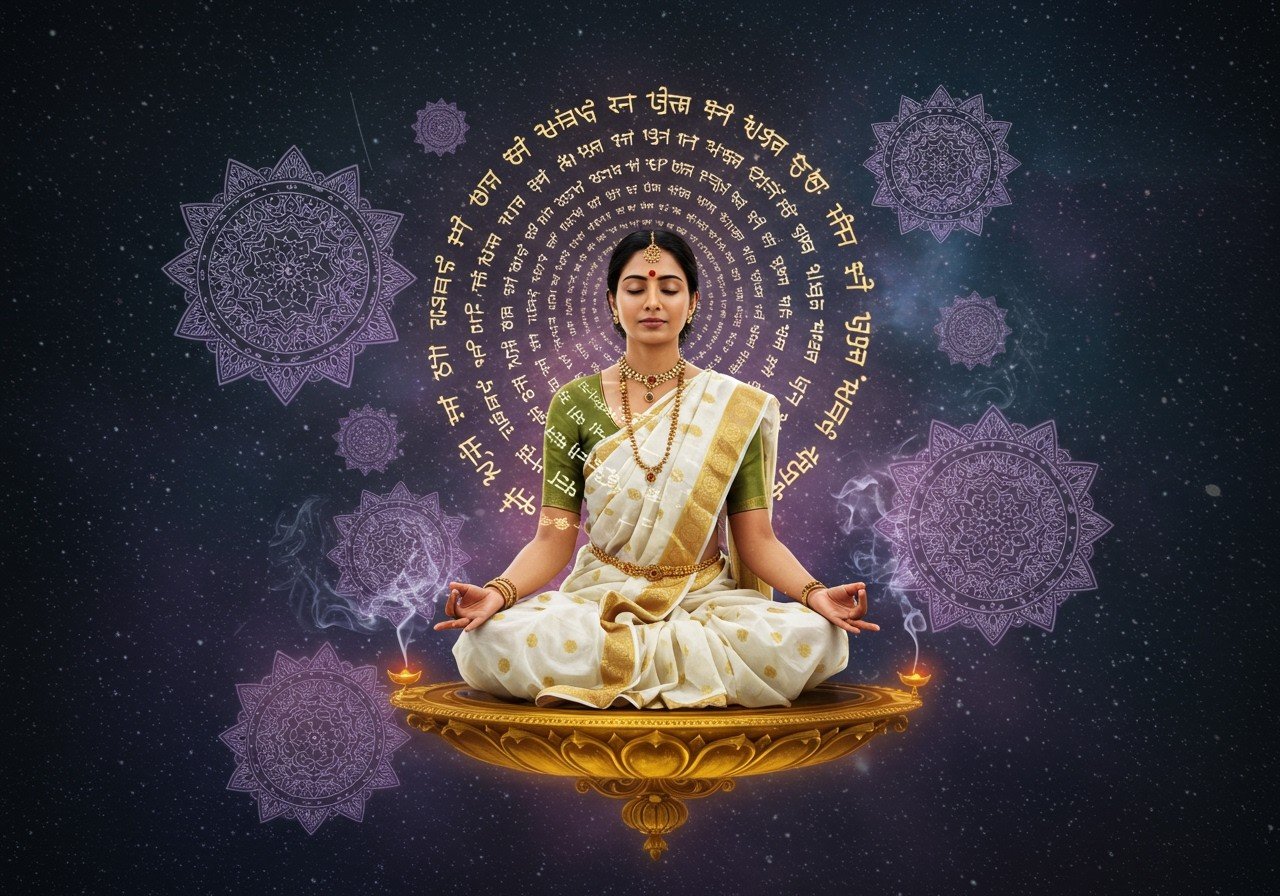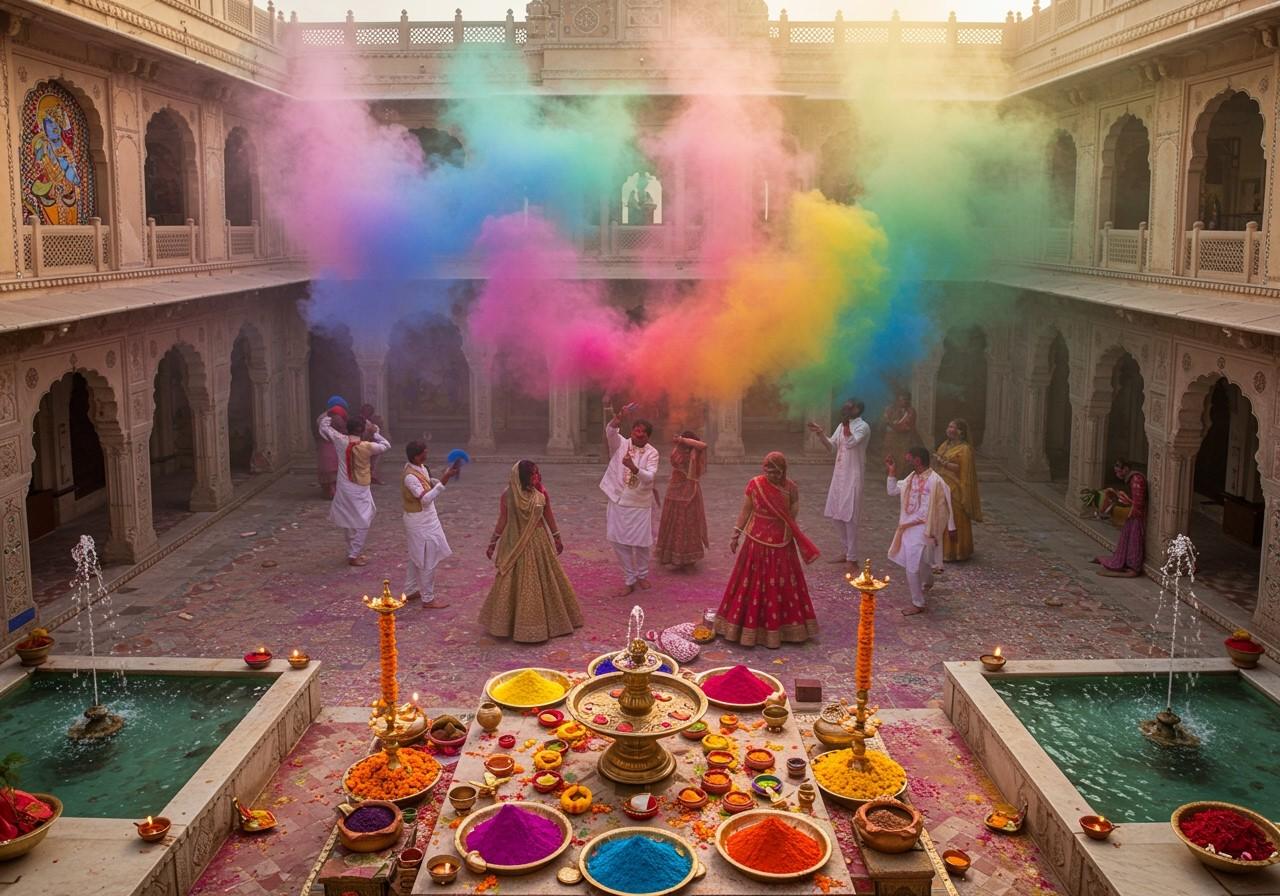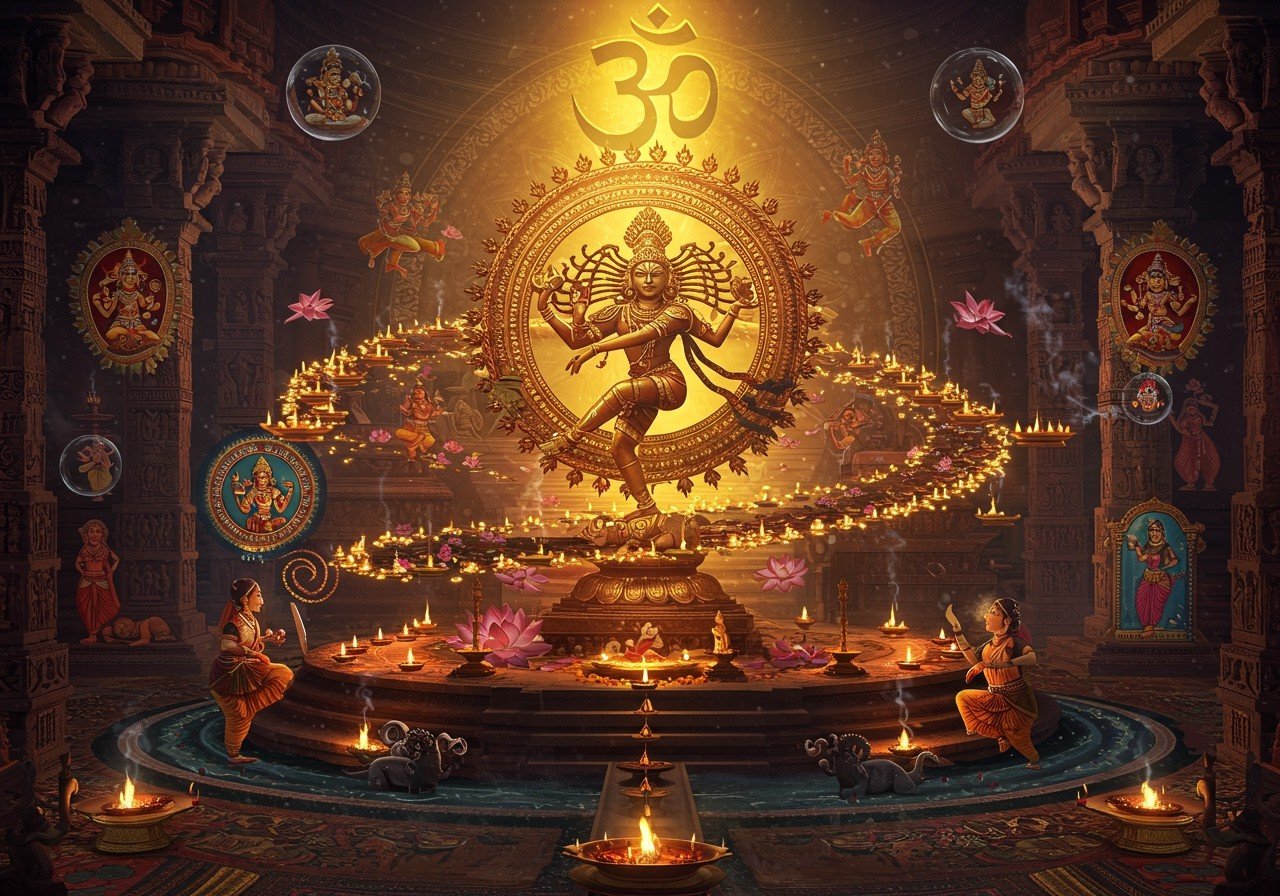
Kali, the Hindu goddess of time, power, and destruction, is a significant figure in Hindu mythology, profoundly influencing art and culture. Her depictions in literature, performing arts, paintings, and sculptures reflect her transformative and enigmatic nature. Kali encourages embracing change and letting go of the past. Her imagery often includes fierce and mystical symbolism, such as a necklace of skulls and her foot on Lord Shiva. Regional cultural traditions and historical narratives also shape her portrayal in various art forms.
Kali in Indian Art
Kali’s fierce and awe-inspiring imagery has been a continuous source of inspiration for Indian artists throughout history.
- Traditional Representations: Traditional representations of Kali, such as those found in the renowned Kalighat paintings of 19th-century Bengal, frequently depict her with a garland of skulls and a protruding tongue, signifying her power over death and illusion. These iconic portrayals have become synonymous with her image.
- Modern Interpretations: Modern artists like Tyeb Mehta and M.F. Husain have reinterpreted Kali’s image, often using it to explore themes of power, resistance, and the complexities of the modern world. Their works offer a fresh perspective on the goddess’s symbolism.
- Tribal and Folk Art: Tribal and folk art forms, including Warli paintings and Madhubani art, showcase regional variations in Kali’s portrayal. These artistic traditions offer unique insights into local beliefs and customs surrounding the goddess.
- Sculptural Representations: In Indian sculpture, particularly within temples and public spaces, Kali is frequently depicted in dynamic, multi-armed forms. These sculptures emphasize her power, energy, and ability to protect her devotees.
- Contemporary Art: Contemporary Indian street art and graffiti often incorporate Kali’s imagery to convey social and political messages. This demonstrates her continued relevance in modern society and her ability to inspire activism and change.
- Textile Arts: Textile arts, such as handloom saris and embroidered panels, showcase Kali as a powerful feminine force. These textiles celebrate her strength, beauty, and her role as a protector and nurturer.
- Digital Art: Modern digital art and graphic design utilize Kali’s image to challenge traditional narratives and promote feminist perspectives. These digital representations often explore themes of empowerment, challenging societal norms and expectations.

Kali in Literature and Film
Kali’s complex character has captivated writers and filmmakers, leading to diverse portrayals across various mediums.
- Bengali Literature: Bengali literature, including works by Rabindranath Tagore and Bankim Chandra Chatterjee, frequently depicts Kali as both a nurturing mother and a fierce protector. This duality reflects her complex nature and her ability to both create and destroy.
- Indian Cinema: In Indian cinema, films like Satyajit Ray’s ‘Devi’ and Bollywood’s ‘Kahaani’ portray Kali as a symbol of feminine strength and vengeance. These films showcase her power and her ability to challenge injustice.
- Contemporary Literature: Contemporary Indian literature, by authors such as Amitav Ghosh and Chitra Banerjee Divakaruni, weaves Kali’s mythology into modern stories, ensuring her continued relevance for new generations. These narratives explore her timeless themes in contemporary settings.
- Traditional Theater: Traditional theater forms like Kathakali and Yakshagana dramatize Kali’s stories with elaborate costumes and makeup, bringing her tales to life on stage. These performances offer a vibrant and engaging way to experience her mythology.
- Television and Web Series: Television series and web series in India often incorporate Kali’s imagery to engage viewers, using her powerful presence to enhance storytelling. This reflects her enduring popularity and her ability to capture audiences’ attention.
- Graphic Novels and Comics: Graphic novels and comic books, such as the ‘Devi’ series by Virgin Comics, portray Kali as a superheroine, blending mythology with modern superhero narratives. This modern interpretation appeals to a new generation of readers.
- Indian Poetry: Indian poetry, both classical and contemporary, invokes Kali as a symbol of ultimate power and transformation, celebrating her impact on personal and societal change. Her imagery adds depth and meaning to poetic expressions.

Kali’s Impact on Local Traditions
Kali’s influence extends deeply into local traditions across India, shaping rituals, festivals, and cultural practices.
- Kali Puja: The Kali Puja festival in West Bengal involves elaborate rituals, processions, and community celebrations, demonstrating the widespread devotion to Kali. This festival is a significant event in the region’s cultural calendar.
- Regional Variations: Regional variations in Kali worship, such as the Dussehra festival in Karnataka where she is venerated as Chamundeshwari, highlight the adaptability of her image and her integration into local customs. These variations reflect the diverse cultural landscape of India.
- In rural communities, Kali’s presence is felt in local healing practices and rituals where she is invoked for protection and purification. This underscores her role in everyday life and her close connection to the well-being of individuals and communities. People often turn to her during times of illness or distress.
- Local folklore and oral traditions transmit Kali’s stories across generations, ensuring that her mythology remains vibrant and alive within communities. These stories adapt and evolve over time, reflecting the changing cultural context while preserving the essence of Kali’s significance.
- Her imagery is also integrated into local dance forms, such as Garba in Gujarat, which sometimes incorporate her symbolism and energy into their performances. This fusion of religious imagery and artistic expression enriches cultural celebrations and performances.

Poojn.in: Supporting Your Kali Puja Needs
Poojn.in, India’s leading online store for cultural and religious goods, offers a wide selection of authentic products to support your Kali Puja and deepen your connection with the goddess. We recognize the importance of having the right items for traditional worship and artistic expression.
- Pure Brass Maa Kali Murti: Beautifully crafted idols for your home altar, available in various sizes.
- Brass Kulo/Tokri: Essential for offerings and maintaining ritual purity during puja.
- Kora Dhoti: Pure cotton white dhoti for wearing during puja or offering to the deity.
- Complete Kali Puja Samagri Sets: Convenient sets containing all the necessary items for performing a traditional Kali Puja.
- Red Hibiscus Garlands and Flowers: Offer the preferred flowers of Maa Kali, sourced fresh and delivered with care.
Conclusion: Kali’s Enduring Legacy
Kali’s pervasive presence in Indian art, literature, film, and local traditions testifies to her enduring influence. From traditional paintings to contemporary digital art, and from classical literature to modern cinema, Kali continues to inspire and empower. Her dynamic imagery and powerful symbolism resonate deeply, bridging the past with the present. As we honor Kali through various forms of expression and celebration, we embrace her enduring legacy, recognizing her as a symbol of strength, transformation, and cultural richness. Whether through rituals, art, or storytelling, Kali’s impact remains profound and ever-relevant in our lives.


